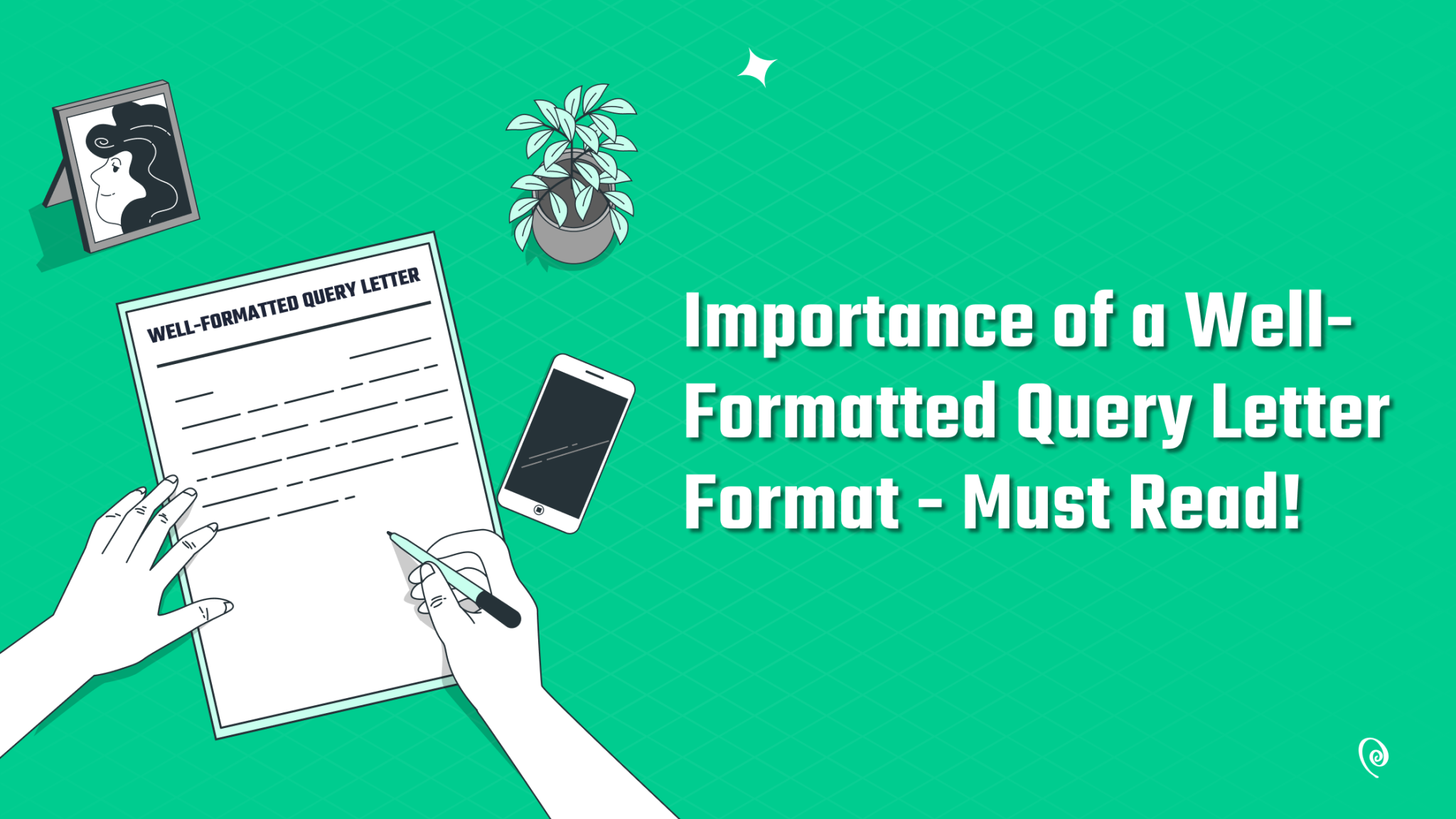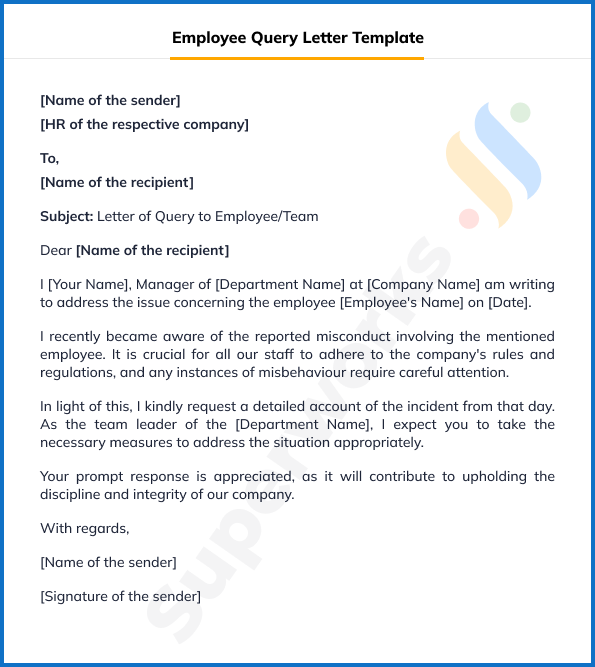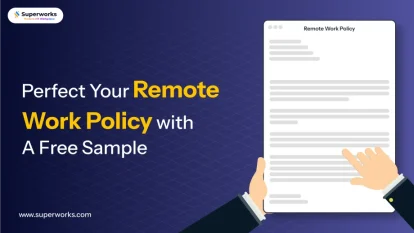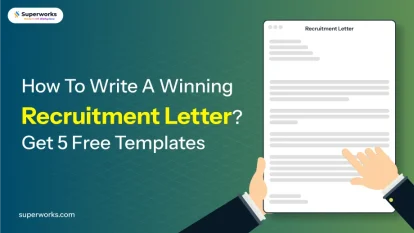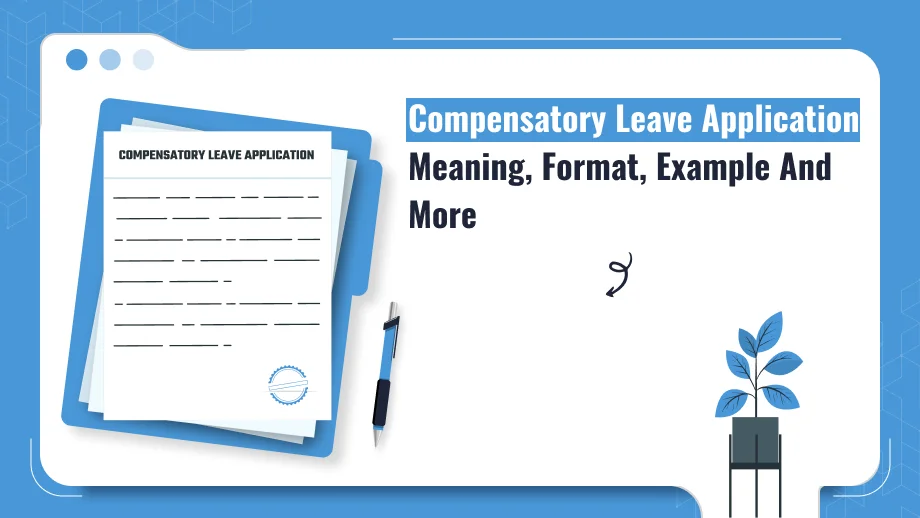Grab a chance to avail 6 Months of Performance Module for FREE
Book a free demo session & learn more about it!
-
Will customized solution for your needs
-
Empowering users with user-friendly features
-
Driving success across diverse industries, everywhere.
Grab a chance to avail 6 Months of Performance Module for FREE
Book a free demo session & learn more about it!
Superworks
Modern HR Workplace
Your Partner in the entire Employee Life Cycle
From recruitment to retirement manage every stage of employee lifecycle with ease.


Seamless onboarding & offboarding
Automated compliance & payroll
Track performance & engagement
Importance of a Well-Formatted Query Letter Format – Must Read!
- Query Letter Format
- 11 min read
- July 27, 2023
Are you facing challenges with employee performance in your company? Wondering how to effectively address the issue without resorting to
termination? Look no further! In this blog, we delve into the significance of a well-formatted employee query letter format and its role in fostering constructive communication within your organisation.
When you encounter a situation where an employee or a team is not meeting expectations, an employee query letter becomes crucial. But before resorting to this final written step, progressive warnings should be offered to the employee. This letter serves as an opportunity to understand the underlying reasons behind the performance issues and provides a chance for improvement.
However, crafting a query letter that captures your thoughts and conveys the right message can be challenging. That’s where Superworks HR Toolkit comes to your rescue. It offers 300+ ready-to-use and customisable letter templates to streamline HR communication.
All that said, let’s start exploring everything about query letter format.
The Meaning of Query Letter
Note: You can download directly from here and edit as per your need.
A query letter is sent to address underperforming employees or teams after previous warnings have proven ineffective.
Misunderstandings arising from the verbal warnings, possibly due to wording or tone, could be factors affecting performance. In such cases, a well-crafted query letter becomes the most effective means of communication to understand the root cause and seek improvement. In the coming section, we will learn how to write an impactful employee query letter format for the employee or team.
What is the Purpose of Issuing a Query Letter?
Well, HR professionals issue a query letter to employee for a number of reasons. Not all but we’ll explore some of the common reasons:
1. Performance issues:
The first reason HR professionals issue a query letter is to address performance issues. When an employee’s work performance falls below the expected standards or shows a consistent decline, HR uses a query letter to initiate a formal inquiry.
This letter allows HR to inquire about the specific factors contributing to the underperformance, understand any challenges or obstacles the employee might be facing, and provide an opportunity for the employee to explain their situation.
By addressing performance concerns promptly and objectively, HR aims to identify potential solutions, offer support, and encourage improvement, all while maintaining a fair and transparent approach to employee management.
2. Attendance concerns:
When an employee exhibits a pattern of frequent absences, tardiness, or unexplained leave, HR employs a query letter to investigate the reasons behind the attendance issues.
This formal communication allows HR to understand any underlying problems the employee may be experiencing, such as health issues or personal challenges. It also offers the employee an opportunity to provide valid explanations for their attendance record.
By addressing attendance concerns through query letters, HR aims to promote a culture of accountability, encourage better attendance, and ensure the smooth functioning of the workplace.
3. Policy violations:
When an employee is suspected of breaching company policies, code of conduct, or other rules, HR uses a query letter to initiate an official investigation. The letter serves as a formal notice to the employee, outlining the alleged violations and requesting their response or explanation.
By using query letters for policy violations, HR ensures that all parties involved are aware of the seriousness of the situation, provides the employee with an opportunity to defend themselves, and collects relevant information to make informed decisions regarding disciplinary actions or corrective measures. This approach promotes fairness and transparency in the handling of policy infractions.
4. Conflict resolution:
The fourth reason HR professionals issue a query letter to employee is to facilitate conflict resolution. When interpersonal conflicts arise in the workplace or when there are concerns regarding the working environment, HR may use a query letter to gather information from the involved parties.
The letter serves as a means to request details about the issues at hand, encouraging open and honest communication.
By initiating a formal inquiry through query letters, HR can better understand the root causes of conflicts, identify potential solutions, and mediate to foster a harmonious work atmosphere. This approach aims to address conflicts proactively, prevent escalation, and promote a positive and productive work environment for all employees.
5. Documentation purposes:
Query letters serve as official records of communication between HR and employees.
By documenting all interactions related to performance issues, attendance concerns, policy violations, conflict resolutions, and other HR matters, organisations maintain a transparent and accountable approach to employee management. These letters help to establish a clear trail of communication and actions taken, which can be essential in legal or compliance-related situations.
Having a well-documented query letter to employee also aids in reviewing past incidents, tracking progress, and making informed decisions about the best course of action to ensure fair and consistent treatment of all employees.
Top 7 Benefits of a Well-Crafted Query Letter Format
The utilization of a well-crafted employee query letter format brings forth numerous advantages, which elevate effective communication as well as facilitate efficient employee management:
1. Clarity:
The first benefit of a well-crafted query letter format is clarity. A structured format ensures that the letter’s purpose and inquiry are easily understood, reducing ambiguity and misinterpretation. This clarity helps recipients grasp the issue at hand and respond appropriately, leading to more effective communication and resolution of concerns.
2. Professionalism:
By adhering to a standardised format, the letter exudes a sense of professionalism, enhancing the credibility of the HR department and the organisation. This professional tone sets the right impression and fosters a positive image of the company, making recipients take the matter seriously and respond with due respect and attention.
3. Consistency:
When HR follows a standardised format across query letters, it creates uniformity in communication. This consistency helps recipients easily navigate and understand the letter’s content, regardless of the specific issue being addressed. It also ensures that essential information is consistently included, making it easier for both HR professionals and employees to process and respond to the letters consistently and efficiently.
4. Compliance:
Following a well-defined format for letters, be it inter department transfer letter or an employee query letter format, ensures that all relevant legal and compliance requirements are met. This helps the organisation avoid potential legal pitfalls and ensures that the letter’s content is in line with established guidelines and regulations. By adhering to compliance standards, HR professionals can confidently address sensitive issues while minimising the risk of legal repercussions and maintaining ethical practices within the organisation.
5. Thoroughness:
A structured format prompts HR professionals to include all necessary and relevant information in the letter. This ensures that the inquiry or investigation is comprehensive and leaves no critical details overlooked. By providing a framework for organising information, the format helps HR address the issue at hand more effectively, leading to a more thorough understanding of the situation and facilitating a well-informed decision-making process.
6. Accountability:
With a clear and standardised structure, both HR professionals and employees understand their roles and responsibilities within the communication process. This fosters a culture of accountability, where all parties are aware of the expectations and take ownership of their actions or responses. The format promotes transparency and ensures that everyone involved is held accountable for their contributions to the inquiry or resolution of the matter at hand.
7. Resolution:
A structured format guides the communication process toward effective resolution of the matter at hand. By clearly presenting the inquiry and relevant details, the format helps HR professionals and employees focus on finding solutions and addressing the core issues. This emphasis on resolution fosters a proactive approach to problem-solving, leading to quicker and more satisfactory outcomes, and ultimately contributing to a more harmonious and productive work environment.
In summary, a well-crafted query letter format promotes clear, professional, and efficient communication while ensuring compliance and accountability throughout the employee management process.
10 Must-Have Things in a Query Letter Format
Writing an effective query letter requires attention to crucial details. To ensure your letter’s success, incorporate the following must-have information:
1. Recipient Details: Do not forget to check that the letter reaches the correct person. For this, you must include the recipient’s name, his or her job title, and his or her contact details. Including this is important as it will guarantee that the query reaches the right individual promptly as well as accurately.
2. Sender’s Info: Just like the recipient’s details, your details are also equally important. So, what are the details you must include? The basic ones like your name, position, department, and contact info. This will help the receiver to identify you in a second.
3. Date: This is a must-have thing in any and every letter. You must include the date on which you are sending the letter. Thinking why? This will help you to establish a timeline for the communication.
4. Subject/Reference: This is an effective tool to grab the attention of a recipient even before s/he opens the mail. So, do write a clear, concise, and crisp subject line that indicates the purpose of the letter just in a glimpse.
5. Introduction: A polite greeting is always a MUST. Need to mention, although saying “Dear” is OK, try to address the recipient by his or her name if possible. This will make your letter more professional as well as impressive at the same time.
6. Purpose: The recipient should know the clear objective of the letter you are sending. This is certainly because a brief statement of the letter’s purpose indicates the specific issue or concern being addressed, helping them to do the needful without fail.
7. Explanation: This is when you actually come to the point. In simpler words, you specify and include all the detailed information about the issue you want to put light on. You can also add supporting evidence if you want to. Evidence often makes the letter more authentic.
8. Inquiry: This part may not be compulsory but if included, it will definitely give a professional touch to your letter. Clear and well-defined questions or requests seeking information or explanations related to the issue.
9. Expectations: This part is also not mandatory but if included, the sender will feel considered. You simply have to mention any expectations for the recipient’s response, actions, or deadlines.
10. Closing: Just like you started the letter politely, you should also end it with utmost courteousness. Your closing statement should express gratitude for his or her attention and cooperation.
Read More – 5 Common Mistakes to Avoid When Drafting a Relieving Letter – Get Free Template!

In search of smart, editable letter templates? We’ve them!
You need our HR toolkit – a kit curated with 300+ letter templates & samples to help HR professionals and businesses to craft HR letters, forms, documents, and more. Superworks’ HR toolkit is the new way to save time & energy.
It is time for you to enhance your business communication in just a click!
Mastering The Art of Crafting an Impressive Query Letter Format!
Crafting a compelling query letter may seem like a daunting task, but fear not – it’s not as complex as rocket science! If you aspire to leave application for employee a lasting impression with a well-crafted query letter, follow these essential steps:
- Introduce yourself as the HR Executive and inquire about an issue that occurred under the leadership of the team lead.
- Address the team leader by name in the query letter.
- Explain the current condition of the team members functioning under the specific team.
- Mention specific details about the mistakes made by the team members.
- Advise the team members to demonstrate sincerity towards their work & strictly adhere to all rules/regulations.
- Motivate employees to seek clarification for any doubts or issues they may have via phone/email.
Employee Query Letter Template
Parting Thoughts
In conclusion, let us ask ourselves: How crucial is a well-formatted query letter format? As we’ve explored the subject, it becomes evident that the answer is “indispensable.”
Commencing our journey with this question, with the aid of our HRMS software and HR toolkit, has allowed us to comprehend the paramount importance of a precisely structured query letter. It serves as the gateway to opportunities for writers seeking representation and publication.
The adherence to proper format showcases professionalism, dedication, and attention to detail. With a mere moment to capture an agent’s or publisher’s attention, a meticulously crafted query letter can make all the difference in the fiercely competitive world of publishing.
Embracing the art of the query letter, with the support of our HR toolkit, is undoubtedly a vital step toward realizing one’s writing aspirations.
